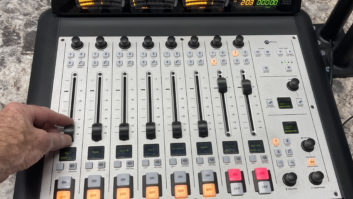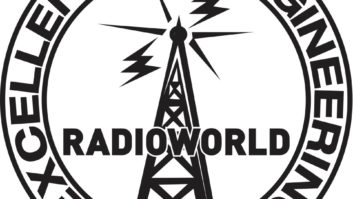Fixing signal problems
May 1, 2003 12:00 PM, By John Battison, P.E., technical editor, RF
There comes a time in every engineer’s life when the station manager or program director announces there is a signal problem in a particular area. Questions about the exact location and date of occurrence are usually answered with a vague �I don’t know, it’s been a longtime.� The engineer’s response depends on whether it’s an AM or an FM station and whether it’s an audio problem such as distortion or low signal level, or perhaps unusual interference.
If it is an AM station, my first reaction, after verifying that the station was operating at full power, would be to grab a field strength meter and the complainer, go to the location in question and listen to the signal on my car radio.
If the level appears to be down, a quick check with the field strength meter should verify the condition. If the field strength is in fact down, roughly define the edges of the diminished coverage, and make a check of the related monitor points if the station is directional.
Have your coworker show you the area that suffers from the signal problem.

Some engineers may question the suggestion to check monitor points if only a small section of the general service area is affected. My feeling is that I want to be sure that the transmitter is operating properly and power radiation is normal. If it’s a non-directional operation there will be fewer checks to make because the signal strength is theoretically more or less the same in all directions. A quick check with a field strength meter or even a car radio will give an idea of the extent of the problem � if there is one.
If audio distortion is observed and the poor quality area is in a directional antenna (DA) pattern null, (which should not occur because a null, or low signal azimuth is not normally in a desired listener area) pay attention to the DA adjustment. This is not likely because a major change in antenna tuning would be required to produce what would be a serious antenna problem. However, this is something that should not be dismissed without consideration.
If the antenna operation is found to be correct and poor audio persists, the audio chain should be examined. It doesn’t happen often these days, but changed component values in the feedback loop should not be overlooked, and the usual audio distortion correction methods should be followed. Some of the older, high-efficiency tube-type transmitters that use third-harmonic tuning to return third harmonic power to the system can introduce distortion when out of adjustment.
Reradiation from other towers is a common problem for AM antenna systems.

A technique used to pinpoint low signal areas is the diagonal radial. This is more commonly used when a directional antenna system produces unanticipated low signal areas during a proof of performance. The diagonal radial is used to pinpoint unanticipated nulls in a new antenna system. It is not commonly used today because computer programming has greatly refined directional antenna pattern design so that unanticipated nulls show up in the design phase long before construction, and therefore should never occur. This radial is laid out so that it crosses the DA radials more or less at right angles. Any pulling in of the signal along this radial could point to an unexpected null. However, this is not likely to occur in an established antenna system absent undesired major antenna system changes.
Look around
Pay attention to any new structures between the AM transmitter and the area of interest. Any new towers in the vicinity of the AM antenna system should be investigated thoroughly.
AM interference takes several forms ranging from power line transformer problems to commutator buzz, and even fish tank thermostats. A good directional radio or a field-strength meter will usually find the source of interference quickly. Unfortunately, curing this interference is not always as easy, especially if it’s a pole transformer. Interference from these beasts often spreads a long way from the source, and is hard to track down.
If the problem occurs with an FM station, spot field strength measurements usually are not helpful, mostly because of the receiver design. Typically, there is not much noticeable level change as an FM receiver is moved around, provided that the antenna is oriented correctly for each move.
Unlike AM, FM transmission uses line-of-sight conditions. In cases of diminished reception, see if there are any new towers or buildings close to the antenna on this azimuth, or if there is a new metallic construction in the vicinity of the affected area. If this question can be answered yes, the problem may be local shadowing.
Sound off
If the complaint is distortion and poor quality, determine if the distortion changed on leaving the area, in case it was a local phenomenon. If picket fencing occurs in a previously clean area, the problem becomes hard to solve, especially if it is caused by new construction. There is always the possibility that the new construction is reflecting a previously unknown side lobe. It’s also possible that this problem could be fixed by changing or redesigning the antenna after the possible side lobe has been identified. Unfortunately, this would probably be expensive and time-consuming.
When designing an FM antenna installation, make sure to obtain the coverage to the radio horizon, and also make sure there is adequate coverage of listener areas between the transmitter and the radio horizon. This point can be overlooked, and will result in desirable listener areas close to the transmitter receiving low signal strength because the main beam passed overhead.
In AM operation, the vertical width of the signal rarely causes a problem because the ground wave originates on the ground and travels horizontally across the earth, normally hugging it. On the other hand, the FM signal originates several hundred feet above ground. It is usually in the form of a concentrated beam that increases in vertical depth as it travels over the immediate and near vicinity of the radiator. Thus it could pass over the desired listening area. This problem is normally taken care of in antenna selection by specifying the necessary null fill or beam tilt that will serve that area.
E-mail Battison at[email protected].












